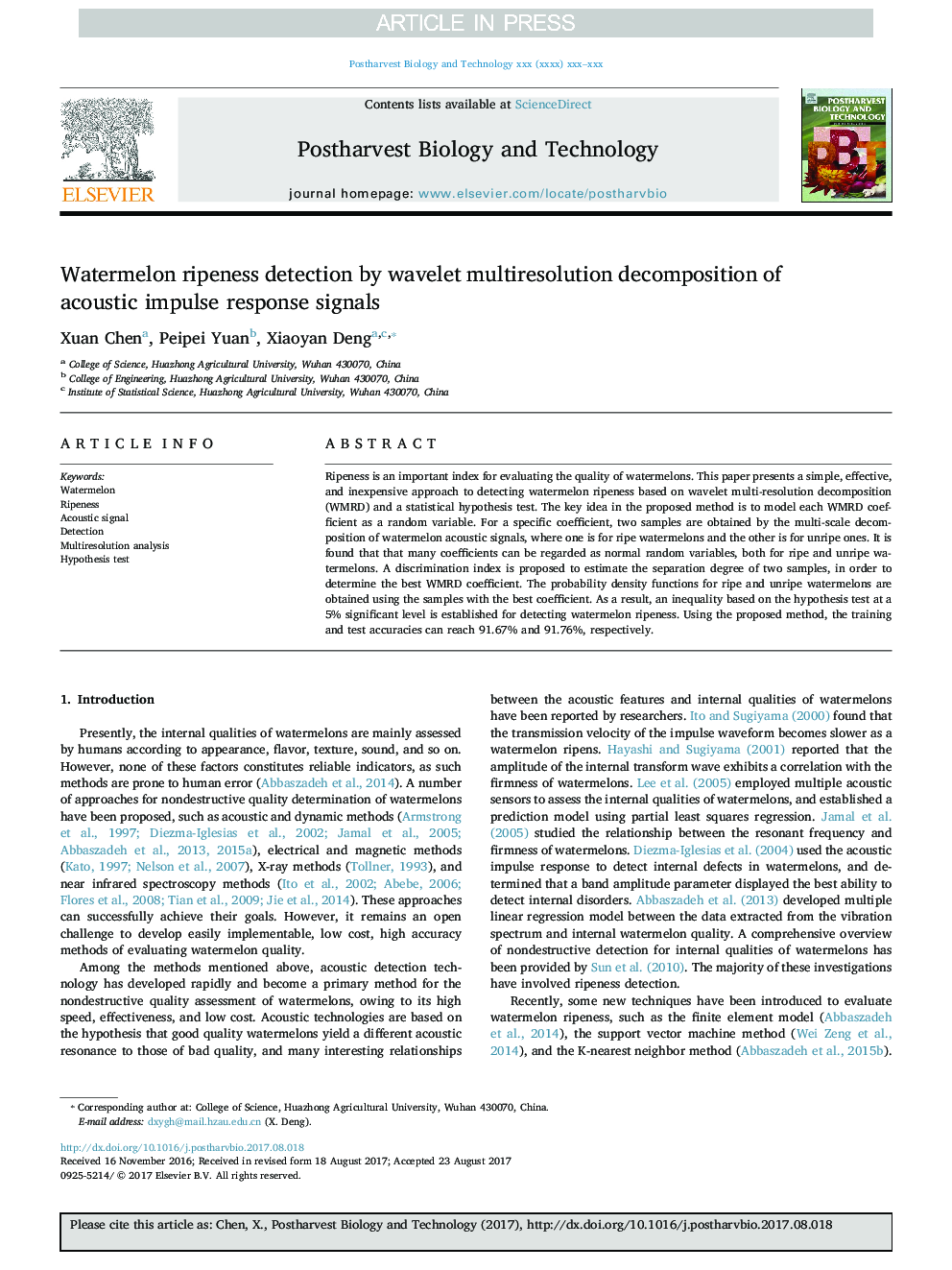| Article ID | Journal | Published Year | Pages | File Type |
|---|---|---|---|---|
| 8881944 | Postharvest Biology and Technology | 2018 | 7 Pages |
Abstract
Ripeness is an important index for evaluating the quality of watermelons. This paper presents a simple, effective, and inexpensive approach to detecting watermelon ripeness based on wavelet multi-resolution decomposition (WMRD) and a statistical hypothesis test. The key idea in the proposed method is to model each WMRD coefficient as a random variable. For a specific coefficient, two samples are obtained by the multi-scale decomposition of watermelon acoustic signals, where one is for ripe watermelons and the other is for unripe ones. It is found that that many coefficients can be regarded as normal random variables, both for ripe and unripe watermelons. A discrimination index is proposed to estimate the separation degree of two samples, in order to determine the best WMRD coefficient. The probability density functions for ripe and unripe watermelons are obtained using the samples with the best coefficient. As a result, an inequality based on the hypothesis test at a 5% significant level is established for detecting watermelon ripeness. Using the proposed method, the training and test accuracies can reach 91.67% and 91.76%, respectively.
Related Topics
Life Sciences
Agricultural and Biological Sciences
Agronomy and Crop Science
Authors
Xuan Chen, Peipei Yuan, Xiaoyan Deng,
